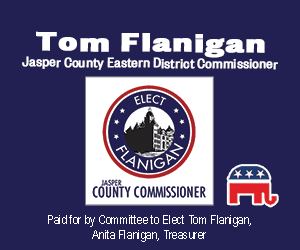When I moved to a rural area two years ago to work for Valley Hope, a drug and alcohol addiction treatment organization, little did I realize that I would see a resurgence of problems related to methamphetamine and other stimulants. While the opioid epidemic has received much of the national attention the past two years, problematic methamphetamine use is on the rise, especially in rural and western areas of the country.
Valley Hope’s patient data shows that over the past five years, alcohol and opioids are the top two substances used by the patients we treat. Methamphetamine and other stimulants, however, are a solid third and showing growth in states like Kansas and Missouri. In Nebraska, methamphetamine and other stimulants became the number two drug category over opioids in 2018.
The national statistics corroborate what I see at Valley Hope treatment centers across the Midwest. According to the 2017 National Survey on Drug Use and Health, published by the NIH National Institute on Drug Abuse (NIDA), approximately 1.6 million people used methamphetamine in the past year, and 964,000 people had a methamphetamine use disorder. The average age of a new person using methamphetamine was just over 23 years old.
Just as alarming, overdose deaths from the category of drugs that includes methamphetamine increased by 7.5 times between 2007 and 2017. In 2017, there were 10,333 deaths in this category; just 1,378 in 2007.
Methamphetamine is an addictive substance that can cause constant euphoria for an extended period. It’s not unusual for users to have extreme feelings of invincibility, with no need to eat or sleep. This aura of invincibility can cause users to engage in highly risky behaviors that can result in negative physical and mental consequences. Eventually, some individuals using methamphetamine need to take higher doses, or take it more often, to have the same desired effect. People who habitually use methamphetamine can experience:
- Anxiety, depression, confusion and insomnia.
- Wild mood swings, including violent behavior.
- Paranoia, hallucinations and delusions.
There are growing concerns that a national methamphetamine and stimulant epidemic may be near, and addiction treatment providers, communities and policy makers must prepare to face it. There needs to be more awareness of the problem and an understanding of the specific challenges involved with treating people that have problems with these substances.
For instance, while people that use opioids have the option to use medication assisted treatment to help manage withdrawal, there are currently no medications available to help mitigate the effects of methamphetamine or help with cravings, though NIDA has made finding such medications a priority.
Some people that have used methamphetamine for long periods also need extended time in residential treatment, because it might be days before sleep cycles are regulated, initial withdrawal is safely completed and the person can better participate in the recovery process. Addiction treatment providers need to continue to work with policy makers and third-party payers to ensure length of stays for residential treatment, and other levels of care, meet the clinical needs of individuals struggling with addiction.
While the attention and response by Congress and the states to the opioid crisis was appropriate and needed, we shouldn’t forget about the other substances that are killing Americans by the thousands, including alcohol, methamphetamine and other stimulants. We should also pay attention to the socially determined factors that can influence the development of addiction, such as housing, transportation, isolation, financial challenges and legal issues. Any future funding and policy measures should be comprehensive enough to allow for a better response to emerging epidemics and areas of concern.
For more information on addiction, treatment and recovery, please visit valleyhope.org or for help 24/7 call (800) 544-5101.


















